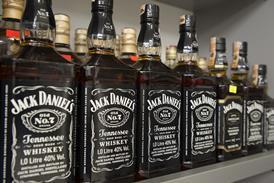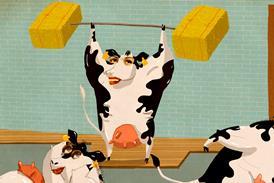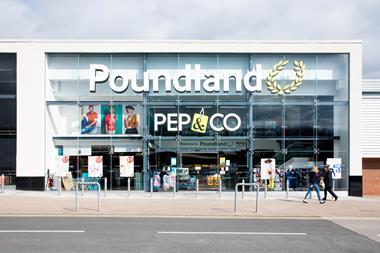A ll this talk about deflation is misleading the uninitiated. I'd contend that price deflation - widely agreed as a decline in general price levels over a sustained period - is neither new nor bad, doesn't cause recession, and is not in itself a problem.
I have a mind to ring Ray Snoddy from the BBC's NewsWatch programme to address the fear-mongering journalism recently aired on the 10 o'clock News. One comment addressed the rise in the price of consumer goods despite heavy in-store promotions. This was followed by anxious commentary about deflation and what it would do to a UK economy already in peril. A clever producer used sobering imagery of a Japanese businessman in tears following a bank collapse some years ago as a prelude to what we could expect here. With all due respect, this is nonsense.
There's a lot of speculation about today's economy, but not much of it seems to have enough context to be relevant or helpful. So let's address this issue of product pricing and deflation. I'll use the toiletries sector as an example.
The facts about pricing in this segment are quite clear - there has been price deflation in toiletries for many years as the on-shelf costs for many of the most sought-after products have historically fallen.
Here's an example. In 2004, the price for a basket of top-selling SKUs experienced the biggest one-year drop in recent memory, falling £3.63. These same products, which cost the consumer £70.42 in 2001, would today cost £62.54 - nearly £8 less. Isn't this deflation? Why haven't the BBC and other news organisations sounded the alarm?
We can substantiate that deflation is real, but in this case and many others, deflation is built into the system by both manufacturers and retailers. Through the introduction of new versions of products such as razors, moisturisers or shower gels, sold at higher price points, both producers and sellers are able to lower (deflate) the costs on other product ranges. Although there is a delicate balance to maintaining these ratios, they have become an integral part of the robust business model of suppliers and retailers.
Average volume prices in the toiletries sector have been stable over the past eight years, despite trade promotion volume growing massively and basket prices falling. This has been achieved because new premium products have been introduced and their sales have balanced the equation.
In the past year, 26% of new toiletry products made a positive impact on category sales and would also have contributed positively to the price/volume equation. The top 10% of new products based on value sales performance was at an average premium of 100%. They cost double the average in their sector and maintain their prices better over time. Sales in the premium sector are stable - it is consumers of less expensive products who appear to be trading down.
Deflation is a normal occurrence that has been happening for some years, balanced by sales generated by additional product choices. Despite the deflationary pressure easing over the past three years, volume growth has faltered, with the result that in 2008 we have seen the lowest volume growth since 2000. It is this decline, not deflation, that the industry should be worrying about.
Tim Eales is industry insight director at IRI.
I have a mind to ring Ray Snoddy from the BBC's NewsWatch programme to address the fear-mongering journalism recently aired on the 10 o'clock News. One comment addressed the rise in the price of consumer goods despite heavy in-store promotions. This was followed by anxious commentary about deflation and what it would do to a UK economy already in peril. A clever producer used sobering imagery of a Japanese businessman in tears following a bank collapse some years ago as a prelude to what we could expect here. With all due respect, this is nonsense.
There's a lot of speculation about today's economy, but not much of it seems to have enough context to be relevant or helpful. So let's address this issue of product pricing and deflation. I'll use the toiletries sector as an example.
The facts about pricing in this segment are quite clear - there has been price deflation in toiletries for many years as the on-shelf costs for many of the most sought-after products have historically fallen.
Here's an example. In 2004, the price for a basket of top-selling SKUs experienced the biggest one-year drop in recent memory, falling £3.63. These same products, which cost the consumer £70.42 in 2001, would today cost £62.54 - nearly £8 less. Isn't this deflation? Why haven't the BBC and other news organisations sounded the alarm?
We can substantiate that deflation is real, but in this case and many others, deflation is built into the system by both manufacturers and retailers. Through the introduction of new versions of products such as razors, moisturisers or shower gels, sold at higher price points, both producers and sellers are able to lower (deflate) the costs on other product ranges. Although there is a delicate balance to maintaining these ratios, they have become an integral part of the robust business model of suppliers and retailers.
Average volume prices in the toiletries sector have been stable over the past eight years, despite trade promotion volume growing massively and basket prices falling. This has been achieved because new premium products have been introduced and their sales have balanced the equation.
In the past year, 26% of new toiletry products made a positive impact on category sales and would also have contributed positively to the price/volume equation. The top 10% of new products based on value sales performance was at an average premium of 100%. They cost double the average in their sector and maintain their prices better over time. Sales in the premium sector are stable - it is consumers of less expensive products who appear to be trading down.
Deflation is a normal occurrence that has been happening for some years, balanced by sales generated by additional product choices. Despite the deflationary pressure easing over the past three years, volume growth has faltered, with the result that in 2008 we have seen the lowest volume growth since 2000. It is this decline, not deflation, that the industry should be worrying about.
Tim Eales is industry insight director at IRI.













No comments yet